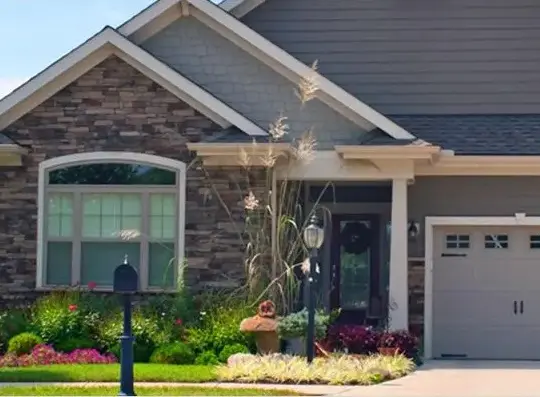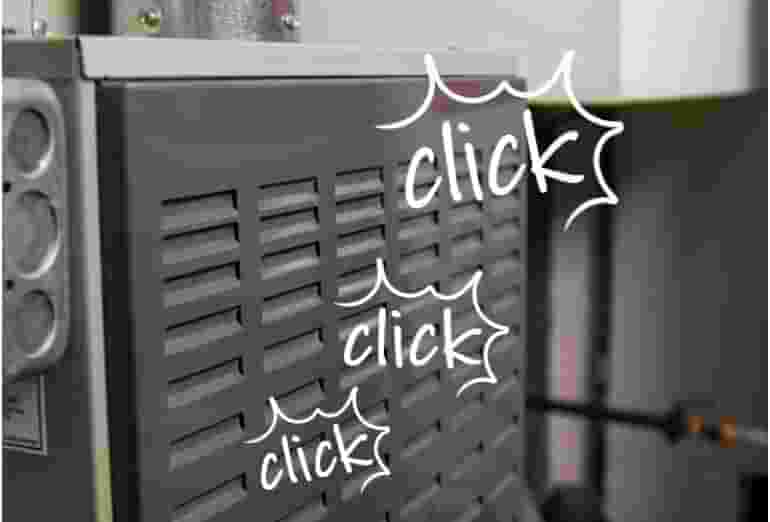Energy prices have been rising for decades.
And according to the U.S. Energy Information Administration, this trend is continuing: retail electricity rates went up 3% from 2013 to 2014. At least natural gas prices are cheaper, right? You might be surprised: even lowered by the 2015 gas glut, natural gas prices are still $1.03 per gallon higher than they were in 2000. That really says it all.
The two best ways to protect your household from rising utility costs over the next few decades are to:
- Generate your own power with rooftop solar panels and wind turbines
- Have an energy-efficient home that consumes less gas/propane, electricity, and water
There’s a lot you can do to make a difference on your utility bill:
Start with Ceiling Fans
Ceiling fans are a great way to reduce both heating and cooling costs. During hot summer months, ceiling fans spin counterclockwise to blow air onto your body and cool you down. In the winter, the fan spins clockwise to pull air up from the floor, reducing drafts and evening out room temperatures.
Using a ceiling fan allows you to keep your thermostat higher in the summer and lower in the winter, saving you money on home heating and cooling bills. However, make sure to follow these seasonal tips to maximize your energy savings:
In the summer, turn it off when you leave the room - When blowing air hits your body, it helps sweat evaporate from your skin and reduce body heat. However, it does not actually chill the air in a room! Running a ceiling fan in an empty room can negate savings produced by reducing air conditioning use.
In the winter, run your fan on the lowest setting - The warming effect from circulating air does not require much force from your fan. Leave it on the lowest setting to maximize your savings.
Target the Attic
This is where a lot of dollars in the form of warm air created by your furnace escapes and where freezing air enters your cozy home in the winter.
Inspect your attic and, if necessary, add insulation. The government’s Energy Star program also recommends that “the attic is well-ventilated using passive vents and natural airflow.” Mr. Handyman can help you make sure your attic ventilation is what it should be.
Replace Your Light Bulbs with CFLs or LEDs
If you have not already switched your incandescent light bulbs for compact fluorescent (CFLs) or light-emitting diode (LED) light bulbs, it’s time. Why? Because over 23 years it costs $201 to keep a single 60-watt bulb socket in service with old-fashioned incandescent bulbs.
Keeping that same lamp, ceiling fixture or porch light working for 23 years using (just a handful of) CFLs costs just $48! A single LED bulb will keep that socket burning bright for 23 years for only $38. That’s like stealing from your utility. Multiply those savings for every bulb socket you have in your home and you’re talking about saving thousands of dollars on utility and hardware store bills over the next couple of decades.
The cost of incandescent bulbs comes from both having to replace them frequently and because they draw much more electricity from the grid. Older bulbs are being phased out, and LEDs and CFLs are the new mainstream bulb of choice, and for good reason.
Between CFLs and LEDs, we recommend LEDs because they save the most money and energy, and if they break, they do not release toxic mercury into your home as do CFLs. However, they do contain lead and nickel, and other heavy metals, so be careful and do a thorough cleaning when a broken LED bulb breaks. And recycle responsibly, you know… once every 23 years.
Install Low-Flow Toilets and Showerheads
The utility rates that homeowners pay for water have gone up 41% since 2010. That’s astounding. What’s more, annual price increases for water are predicted to be above inflation rates for the immediate future.
Climate change is threatening our national water supply, and as droughts become more common and longer-lasting, and as our population increases and water delivery infrastructure ages (most of it was built in the 1950s and needs to be replaced), it’s easy to see why rates have skyrocketed and will likely continue to do so.
LOW-FLOW TOILETS
One thing you can do to reduce your household’s dependency on the water is to install low-flow toilets. The old toilets you may have in your home may very likely use 3.5 gallons of freshwater for each flush. Low-flow toilets only use 1.6 gallons. That saves 54% on each flush. A typical household with a low-flow toilet saves 26,538 gallons of water annually. That’s a big deal.
LOW-FLOW SHOWERHEADS
Another efficiency improvement is installing low-flow showerheads on your showers.
The state of Nebraska calculates that installing low-flow showerheads saves water, money, and energy, too – unlike toilets, showers use water heated by your water heater, so it saves money on your gas or electricity bill, too.
Here’s the tally: For a family of four, the water heater cost savings alone of using low-flow showerheads is $95.20 for natural gas and $130 for electric water heaters. This does not take into account the cost of the 21,900 gallons of water you didn’t use.
Another winning strategy: repair leaky faucets right away. The drips add up fast.
Another simple energy-saver: turn down the thermostat on your water heater. Turning it from 140 degrees down to 120 degrees can save your household $450 per year with a minimal lifestyle change (and no more accidental scalding).
Mr. Handyman is happy to replace your current fixtures with low-flow toilets and low-flow showerheads, to save you money and be more energy-efficient.
Think Outside Your Home
Energy efficiency isn't just limited to improvements inside your home. Some outdoor energy efficiency ideas include the following:
Add Outdoor Lighting Controls and Timers - Motion detector lighting outside of your home reduces the amount of energy spent on lighting your porch, driveway, and backyard. Plus, it’s a smart security feature.
Install Energy Efficient Windows - Drafty windows? In the wintertime that’s the worst. And in the summer your cooled air escapes like money flying out of your wallet. If you’re fed up, consider an upgrade to energy-efficient windows.
Install Energy Efficient Doors - When doors have good energy ratings for your local climate, fit properly, and have eco-friendly features, you will recognize the savings on your energy bill because your furnace and air conditioner will not be working as hard. Also look into new storm doors, patio doors, and energy-saving features like insulated drapes.
Plug Energy Leaks - Want to work with the windows and doors you have? Install door sweeps and foam gaskets in order to prevent air infiltration and help you save on heating and cooling costs. Weatherstripping and caulking can also improve the performance of windows and doors when it comes to keeping your room temperature stable.
The attic is also a common culprit for drafts, often hidden for years by insulation. These energy leaks are often more complicated to fix, but you’ll rest easier knowing they’re taken care of.
Reuse and Recycle - Don't just toss your unwanted belongings, outdated appliances, or cabinets. Reuse and recycle them with a responsible, reputable tech trash recycler! Or by donating these goods, you can help those in need instead of filling up a landfill. Plus, you may get a tax write-off for your donation.
These are a few ideas to get you started thinking about energy efficiency.
---
If these sound like a fit for your home, call your local Mr. Handyman today for all the help you need to lower your household’s electricity, gas, propane, and water. Please note that plumbing and electrical services may be unavailable in some locations due to local regulations and licensing requirements. Call for more information.
 Click to call
Click to call




